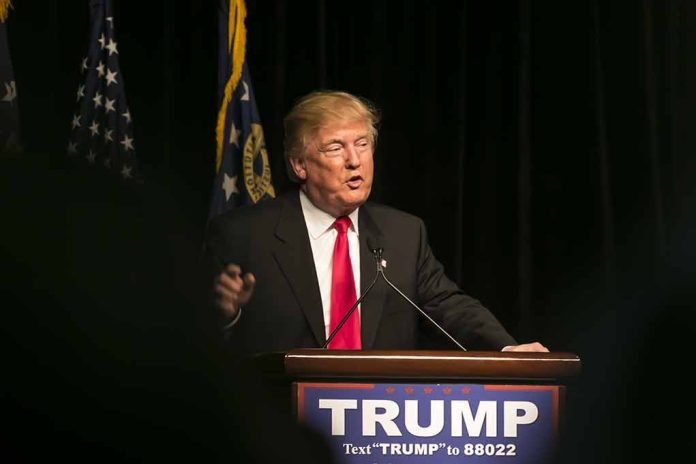
Donald Trump pledges to end sanctuary city policies, drawing intense debate and legal battles over local sovereignty and public safety.
At a Glance
- Trump plans to abolish sanctuary cities using executive authority.
- Legal challenges have historically blocked attempts to defund these cities.
- Critics argue sanctuary policies enhance public safety through local law enforcement cooperation.
- The debate involves complex legal interpretations and constitutional questions.
Town Hall Commitment
At a women’s town hall moderated by Fox News’ Harris Faulkner, Donald Trump expressed a renewed commitment to end sanctuary cities, reinforcing his dedication to bolster law enforcement and traditional values. Questioned by Nancy, whose son was tragically murdered by an undocumented immigrant, Trump detailed his strategy to use executive orders and the Aliens Act of 1798 to dismantle sanctuary city policies, focusing on Democrat-led urban areas.
Criticism of sanctuary cities isn’t a new stance for Trump. His administration faced legal setbacks in previous attempts to cut federal funding. In 2017, a US district judge blocked his order challenging local jurisdictions’ protective measures for undocumented immigrants, citing constitutional violations. Cities like San Francisco and Santa Clara County argued this order infringed upon local sovereignty and filed lawsuits leading to the nationwide injunction.
Trump says he can end sanctuary cities with an executive order.
“ “You can do it with the Aliens Act of 1798. We can move them out of the cities.” #GaPol #Election2024 pic.twitter.com/PWJBCLPLyb
— The Atlanta Voice (@theatlantavoice) October 16, 2024
Legal and Constitutional Battle
Legal battles over sanctuary policies have long involved questions of federal versus local authority. While Trump aims to punish jurisdictions not complying with federal immigration laws, the term “sanctuary city” lacks a precise legal definition, leading to diverse interpretations and implementation across regions. The previous administration’s travel ban also faced court challenges, further complicating arguments over executive power and judicial oversight.
More information on this legal context can be found in the sources detailing the judge’s rulings and impact on Trump’s presidency.
Trump’s ongoing objections to sanctuary cities emphasize his perception of them as undermining federal law and endangering public safety, while sanctuary advocates argue these policies cultivate trust and cooperation within immigrant communities, ultimately enhancing safety. Yet, the complexities of law enforcement’s role in immigration enforcement raise constitutional debates, challenging the practicality of enforcing cohesive federal immigration policies across diverse jurisdictions.
Trump says he can end sanctuary cities with an executive order.
“ “You can do it with the Aliens Act of 1798. We can move them out of the cities.” #GaPol #Election2024 pic.twitter.com/PWJBCLPLyb
— The Atlanta Voice (@theatlantavoice) October 16, 2024
Moving Forward with Policy
In pursuing the termination of sanctuary city policies, the main obstacles for Trump remain constitutional adherence and gaining bipartisan support. The FBI’s cooperation with ICE and the ongoing division over local versus federal law participation in immigration enforcement present additional hurdles. Sheriff Chuck Jenkins and others advocating for more comprehensive collaboration with ICE differ widely from those cautious of legal repercussions for detaining individuals without judicial orders.
Trump’s pledge to eliminate sanctuary cities if elected reflects a broader initiative to prioritize law enforcement and national safety while navigating complex legislative landscapes that frame this policy issue. The robust debate over these policies’ effects on safety, legality, and morality persists, posing challenges for policymakers at every level.
Sources
1. Trump’s order to restrict ‘sanctuary cities’ funding blocked by federal judge









